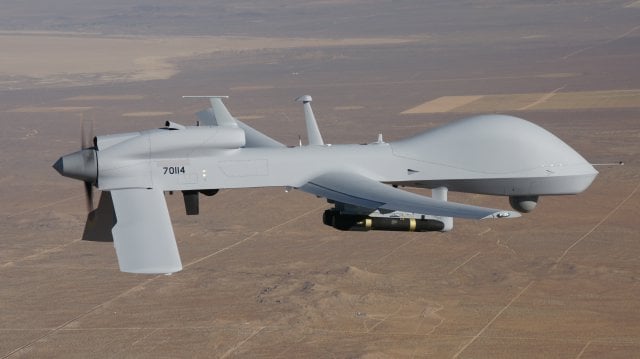Backpack Drones, Smaller Weapons: Army Thinks Small On UAVs
Posted on
AUSA: When it comes to drones, the Army is now thinking small.
The next new drone the service will buy is a Rucksack Portable UAS, Col. Courtney Cote, project manager for Unmanned Aircraft Systems (UAS), told reporters at an Association of the United States Army update on Army UAS plans. Cote’s office already has a “validated requirement” – Pentagon approval – and is now deciding how much money to ask for to buy the drone, which will be quadcopter size.
Col. Thomas von Eschenbach, director of the aviation capabilities development and integration directorate, said the Army also wants to buy weapons smaller than the AGM-114 Hellfire missile carried by its Predator-derivative MQ-1C Gray Eagle.
“We’ve asked industry to come tell us what they have and what they can provide,” von Eschenbach said. “We would like increased range. We would like something that doesn’t have to launch off the rail and have a sonic boom.”
The Hellfire, originally an anti-tank weapon, isn’t large – the complete missile weighs about 105 pounds and the warhead 13 to 45, depending on the model – but von Eschenbach said lighter weapons would be desirable for a number of reasons. Those include less weight, more flexibility, and less cost per target.
Even the Hellfire is “a huge load for an unmanned system,” he said. “I would like a … weapon that weighs 30 pounds.” A Gray Eagle could carry three of those for each of the four Hellfires the drone now carries and add other payloads. “Now I’ve got three for one,” von Eschenback said. “On another rail you have munitions with other effects.
Being smaller, the new munition would also be cheaper, he reasoned. “We’ve modified the Hellfire over the past 15 years,” he noted, which has made it more expensive. “That’s a lot of money to expend for (a target that) maybe it’s two personnel in the open – fill in the blank, I won’t quote the number right here. I think we can get a cheaper opportunity there.”
The Army is also considering expanding what it can do with its UAS by adding other sorts of payloads.
“My favorite one is electronic warfare,” von Eschenbach said. “We currently don’t have aviation platforms that do jamming. We think that is a good idea, the Army does. If we had a multifunctional electronic payload it would make sense to put it on an unmanned system.” But for now, he said, that’s just another small idea.
Subscribe to our newsletter
Promotions, new products and sales. Directly to your inbox.

